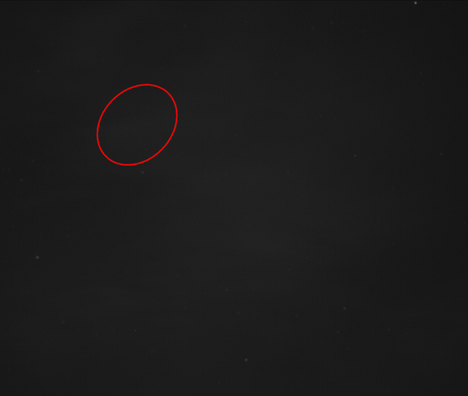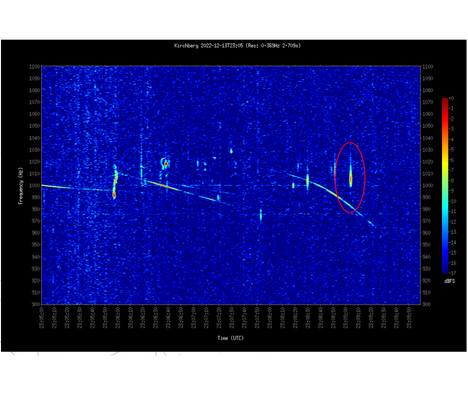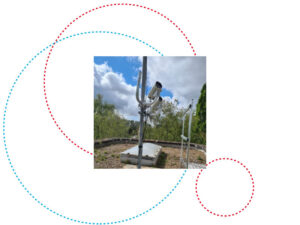It is fascinating to see a streak of light across the sky, and never more so than those times of the year when the meteors fall to earth in such a multitude that they look like sparkling rain. The Geminid shower is such an event. Our researchers observed such “shooting stars” falling from the sky at their peak in mid-December thanks to cameras newly installed on top of one of the university buildings.
A meteor shower like the Geminids is unique because it is the debris from a comet that existed once upon a time. When a comet comes close to the Sun and is subjected to a lot of heat, it breaks up into pieces. These meteoroids orbit the Sun for a very long period. “When the Earth gets in the path of meteoroids that are circling the Sun, we see multiple meteors, called showers. That is why the showers occur every year approximately at the same time,” explained Dr. Jan Thoemel, who is observing the Geminids.
The University of Luxembourg’s Interdisciplinary Centre for Security, Reliability and Trust (SnT) has two instruments for meteor research. Dr. Thoemel used newly installed cameras and an antenna to observe the meteors. He operates these installations from the SnT space observatory laboratory.
“The cameras and the antenna captured a Geminid meteor. We were happy to witness this meteor shower and to share our observations with the NASA network”, said Dr. Thoemel.
With the newly installed cameras, SnT contributes to an observation network coordinated by the NASA Ames research center and the SETI institute. This network called CAMS is a comprehensive meteor-spotting camera network that operates throughout the world. They aim to produce a sky atlas for meteors. With this sky atlas, NASA can determine the location of the meteor showers they are looking for. SnT’s contribution to this network is possible thanks to a donation of these cameras from an astronomy enthusiast from Luxembourg, Mr. Schutz.
“The Geminid shower is already well-known. However, the NASA camera network also aims to explore minor meteor showers. It is very fascinating to discover minor meteor showers because this means that there was a comet that broke into pieces that we did not know about. Such comets are very old. Discovering them and understanding where they come from can teach us a lot about our solar system and our galactic neighbourhood,” shared Dr. Thoemel.
Meteor observation is also a first step into more research on space sustainability: “In the future, artificial objects will also re-enter Earth’s atmosphere. For example, SpaceX has thousands of satellites in orbit. The very same observation methods that we explore for meteors will help us to understand if satellites will be a danger on Earth when they re-enter,” said Dr. Thoemel.
“Our cameras can, in principle, also observe orbiting satellites at dusk and dawn when they reflect sunlight. We brainstorm to determine their trajectories. Such data will be important in the future to manage the expected enormous satellite traffic,” added Dr. Thoemel.

Hardly visible Geminid meteor, photographed by the NASA-networked cameras.
The NASA-networked cameras are commercial cameras that use software designed for observing meteors. Exploring the sky, they take 25 images per second. Mathematical algorithms detect if there is an unusual light phenomenon in the images. In the end, human operators confirm that the light was a meteor. With the stars in the background they can also determine the path of the meteor as it moves across the sky. The images are then sent to NASA for analysis and confirmation.

A radio antenna complements the meteor observation facilities of SnT. This antenna is part of a network of receivers scattered across Belgium, known as the Belgian RAdio Meteor Stations (BRAMS), which is led by the Belgian Institute for Space Aeronomy (BISA). This is a so-called bistatic radar system, where radio signals are transmitted from Belgium into space. Meteors that enter the atmosphere have a high speed of 50 km/s and burn in the atmosphere. When they heat up, the meteors leave behind a trail of ions and electrons. These electrons reflect the radio signal back to Earth. The SnT antenna also receives these signals 24 hours a day. That’s why SnT can observe meteors day and night.
